 Image search results - "Soka" Image search results - "Soka" |

The Usokae Festival is held every January at the Kameido Tenmangu (Tenjin) Shrine. "Uso" means bullfinch, and "kae" means to change. The bullfinch is a symbol of good luck, and uso can also mean "lie." People replace their wooden uso dolls believing that the previous year's bad luck was a lie, to be exchanged for good luck in the new year with the new uso doll.
|
|
|
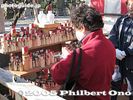
Bullfinch exchange. The person puts her old bullfinch on the rack and prays.
|
|
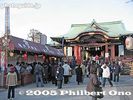
People then go to the bullfinch stall on the left of the main worship hall.
|
|

Usokae stall
|
|
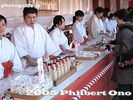
Usokae stall. The uosokae dolls come in various sizes, look pretty much the same.
|
|

Usokae stall
|
|

A pair of giant usokae dolls flank the entrance to the main worship hall.
|
|

During the festival, stage performances are held.
|
|
|
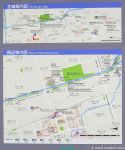
Soka Matsubara is a nice, long pedestrian path stretching for 1.5 km lined on both sides with over 600 evergreen pine trees. Part of Soka-juku post town on the old Nikko Kaido road to Nikko in Tochigi Prefecture. Designated as a National Place of Scenic Beauty. Near Dokkyodaigakumae Station (Tobu Railway from Asakusa).
|
|
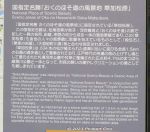
About Soka Matsubara. Some 60 of the pine trees have survived since the Edo Period.
|
|

Soka Matsubara is near Dokkyodaigakumae Station (Tobu Railway from Asakusa) east exit.
|
|
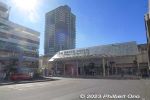
Dokkyodaigakumae Station (Tobu Railway from Asakusa) east exit. Get out here to walk to Soka-Matsubara.
|
|
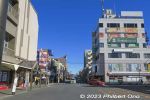
From Dokkyodaigakumae Station's east exit, walk on this main road to Soka-Matsubara. Short walk.
|
|
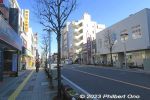
While walking on this main road to Soka-Matsubara, you will soon see the large arch bridge over the road.
|
|
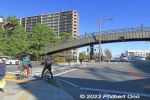
Where the Soka-Matsubara pine tree path intersects with a major road at two locations, there's a large arch bridge to enable pedestrians to keep walking non-stop along the pine trees.
|
|
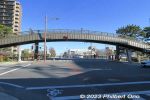
This is one of the two arch bridges. Named Hyakutai-bashi (百代橋), 62.5 meters long, 3.5 m wide. It has steps and a narrow slope to push bicycles. Not wheelchair accessible.
|
|
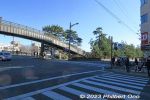
Soka-Matsubara pine tree path continues on the right going south. There's another similar arch bridge at the intersection further south.
|
|

The arch bridge is near the middle of the pine tree path. If you want to walk through the entire pine tree path from here, go left first, then backtrack and walk south until the end. Monument near the arch bridge.
|
|
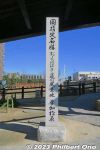
Monument indicating Soka-Matsubara as a Scenic Place on the Oku-no-Hosomichi path.
|
|
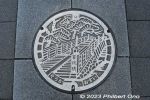
Soka's manhole depicts Hyakutai-bashi (百代橋) and Soka-Matsubara pine trees in Soka, Saitama. "Hyakutai" (Eternity) comes from Basho's Oku-no-Hosomichi poetry collection.
|
|
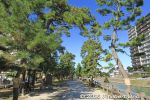
From Hyakutai-bashi Bridge, I first walked north along Soka-Matsubara.
|
|

Matsuo Basho monument
|
|
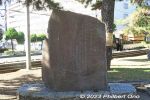
Matsuo Basho monument at Soka-Matsubara.
|
|
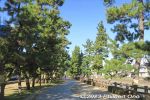
Soka-Matsubara pine trees north of Hyakutai-bashi Bridge.
|
|
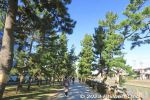
Soka Matsubara pine trees may have been originally planted as early as 1683 by government official Ina Tada'atsu (伊奈忠篤) in the Fudaba Park area where there was a river boat dock.
|
|
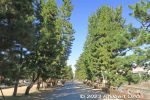
By 1877, Soka-Matsubara had 800+ pine trees. In the 1930s, Soka-Matsubara had over 700 pine trees. However, by the 1960s due to vehicle exhaust fumes, the number of pine trees shrank to 60.
|
|
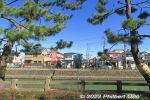
A local group was formed in 1976 to replant pine trees. Their efforts was successful with 500+ trees planted. Vehicular traffic through the pine trees stopped in 1982. Thankfully, it's now pedestrians only.
|
|
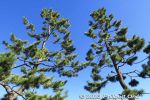
Green pines against the blue sky are therapeutic for the eyes.
|
|
|
|
|
|
|
|
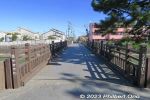
Nakazone Bridge over Ayase River.
|
|
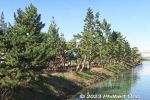
Ayase River
|
|
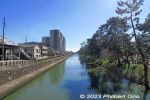
Ayase River looking south. 綾瀬川
|
|
|
|
|
|

Turtle sculptures.
|
|
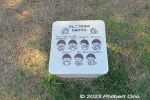
Stone bench.
|
|
|
|
|
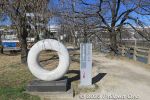
The northern end of Soka-Matsubara has this ring.
|
|
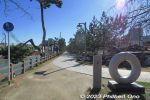
Northern end of Soka-Matsubara. From here, walk 1.5 km to reach the southern end of Soka-Matsubara pine trees.
|
|
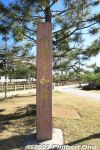
Monument says 今様草加松原 mean "Modern-style Soka-Matsubara" in reference to current efforts to preserve the pine tree path in modern ways.
|
|
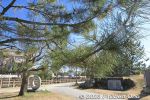
Northern end of Soka-Matsubara.
|
|

Starting to backtrack to Hyakutai Bridge and proceed to the southern end of the pine trees.
|
|
|
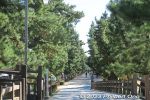
Soka-Matsubara pine tree path.
|
|
|
|
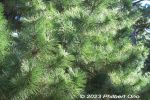
Pine needles and pine cones.
|
|
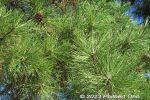
Pine needles and pine cones up close.
|
|
|
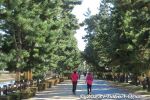
The pine tree path is popular among joggers and for walks.
|
|
|
|
|
|
|
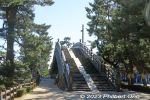
Back to Hyakutai Bridge. This is near the halfway point on the Soka-Matsubara path.
|
|
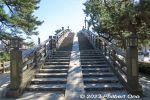
Hyakutai Bridge has steps and a narrow slope for pushing bicycles. Not wheelchair accessible. 百代橋
|
|

Hyakutai Bridge is decorated with small relief sculptures like these pine cones.
|
|
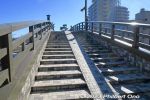
Going up Hyakutai Bridge.
|
|

Northern view from Hyakutai Bridge.
|
|
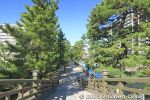
Northern view of pine trees from Hyakutai Bridge.
|
|

Hyakutai Bridge.
|
|
|
|
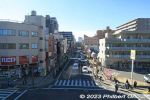
View from Hyakutai Bridge. This road goes to the train station straight ahead.
|
|
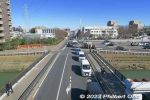
View from Hyakutai Bridge.
|
|
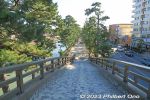
Southern view from Hyakutai Bridge.
|
|

Southern view of Soka-Matsubara pine trees from Hyakutai Bridge, Saitama.
|
|
|
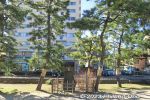
Along the pine tree path is this monument for the Japanese bush clover planted by the late Donald Keene who first visited Soka in 1988 to give a keynote speech at the Oku-no-Hosomichi International Symposium.
|
|
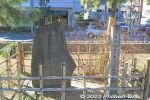
Monument for the Japanese bush clover planted by the late Donald Keene. Flowers not in season in Feb. Donald Keene was a renown professor of Japanese studies (especially literature) at Columbia University in New York. ドナルド・キーン記念植樹
|
|

Monument for the Japanese bush clover planted by the late Donald Keene.
|
|

Walking south along Soka-Matsubara pine trees.
|
|
|
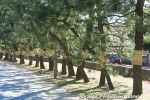
Straw bands are wrapped on the tree trunks to catch harmful insects.
|
|
|
|
|
|
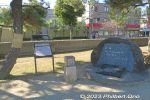
Monument inscribed with: "Place of Scenic Beauty: Soka Matsubara - Scenic Place Along Oku-no-Hosomichi" Calligraphy by Donald Keene.
|
|

About Soka Matsubara as a Scenic Place Along Oku-no-Hosomichi. It's one of the 25 designated Scenic Places along the Oku-no-Hosomichi extending over 12 prefectures.
|
|
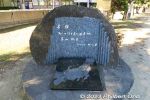
Donald Keene wrote the inscribed sentence: "Place of Scenic Beauty: Soka Matsubara - Scenic Place Along Oku-no-Hosomichi"Donald Keene was a renown professor of Japanese studies (especially literature) at Columbia University in New York. Keene is revered in Soka for helping with local activities related to Oku-no-Hosomichi.
He also famously became a Japanese citizen and spent the last years of his life living in Japan.
|
|

Soka's claim to fame is this pine tree path's inclusion as a Scenic Place along the Oku-no-Hosomichi travel route taken by famous Haiku poet Basho.Monument includes a map of Basho's Oku-no-Hosomichi travel route. He started from Fukagawa, Tokyo, visited Soka, went up north to Sendai, Sakata (Yamagata), and proceeded back along the Sea of Japan, Niigata, Kanazawa, Tsuruga, and ended at Ogaki, Gifu. All the places he visited on this epic journey has monuments or statues celebrating Basho.
|
|
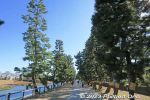
Non-stop pine trees on Soka-Matsubara. Probably the longest pine tree path I've been on.
|
|
|
|
|
|
|
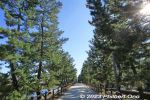
Soka-Matsubara pine trees in Soka, Saitama. Part of the Nikko Kaido road and Oku-no-Hosomichi stop by Haiku poet Matsuo Basho.
|
|
|
|
|

Pine cone
|
|
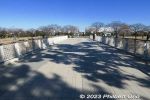
Harp Bridge to Matsubara Ayasegawa Park across Ayase River.
|
|
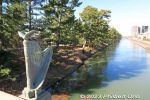
Harp Bridge has a harp sculpture.
|
|
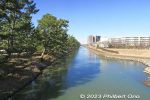
Soka Matsubara goes along the Ayase River. 綾瀬川
|
|

Soka Matsubara goes along the Ayase River.
|
|

Matsubara Ayasegawa Park is a large park with cherry blossoms.
|
|
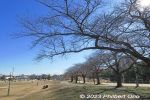
Matsubara Ayasegawa Park's cherry blossoms must be beautiful when in bloom.
|
|
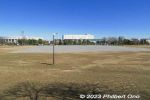
Matsubara Ayasegawa Park
|
|
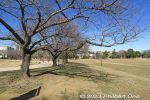
Matsubara Ayasegawa Park
|
|
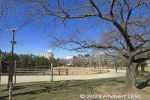
Matsubara Ayasegawa Park
|
|
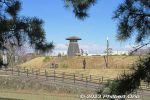
Matsubara Ayasegawa Park watchtower
|
|

Soka-Matsubara pine trees and Ayasegawa River.
|
|
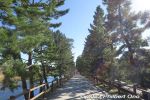
Walking further south along Soka-Matsubara.
|
|
|
|
|
|
|
|
|
|
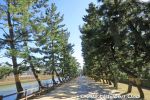
Such a pleasant walk along Soka-Matsubara.
|
|
|
|
|
|
|
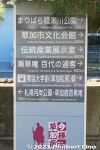
Directions and distances.
|
|

The other arch bridge on the southern end of Soka-Matsubara.
|
|
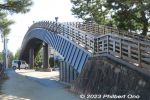
Yatate Bridge on the southern end of Soka-Matsubara. It's 96.3 meters long and 4.14 meters wide. Bigger than Hyakutai Bridge. 矢立橋
|
|

Yatate Bridge includes a narrow slope for walking your bicycle. Not wheelchair accessible. 矢立橋
|
|
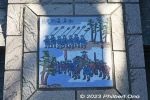
Bicycle slope decorated with these picture tiles.
|
|
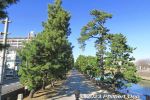
Northern view from Yatate Bridge.
|
|

Northern view from Yatate Bridge.
|
|
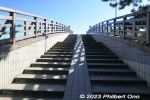
Going up Yatate Bridge.
|
|
|
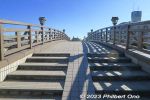
Top of Yatate Bridge.
|
|

Top of Yatatebashi arch bridge.
|
|
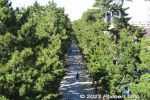
Northern view from Yatate Bridge.
|
|
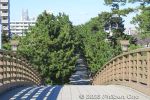
Northern view from Yatate Bridge.
|
|
|
|
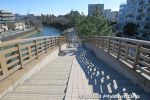
Southern view from Yatate Bridge.
|
|
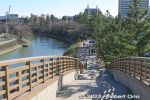
Looking south from Yatate Bridge. Almost the end of Soka-Matsubara pine tree path.
|
|
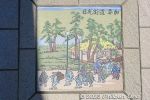
Picture tile on the bridge depicting a samurai procession on the Nikko Kaido in Soka.
|
|
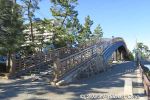
Yatate Bridge on the southern end of Soka-Matsubara. "Yatate" also comes from Basho's prose in Oku-no-Hosomichi. 矢立橋
|
|
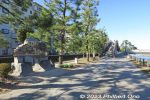
Nikko Kaido Road monument near Yatate Bridge. The monument is in the shape of Saitama Prefecture indicating Soka-Matsubara on Nikko Kaido is one of Japan's 100 Best Roads. 日本の道百選の顕彰碑
|
|

Nikko Kaido Road monument. Nikko Kaido was one of the five main roads from Edo (Tokyo) during the Edo Period (17th to 19h centuries). Nikko was important for having the splendid mausoleum for Tokugawa Ieyasu, the first Tokugawa shogun.
|
|
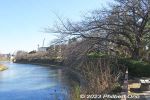
The southern end of Soka-Matsubara has Fudaba-kashi Park with cherry blossom trees and tourist information center. 札場河岸公園
|
|
|
|
|
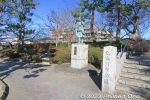
Statue of Matsuo Basho in Fudaba-kashi Park on the southern end of Soka-Matsubara. Statue was built in 1989 to mark the 300th anniversary of Basho's Oku-no-Hosomichi journey in 1689. Built with donations.
|
|
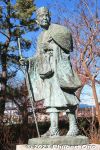
Statue of Matsuo Basho at the southern end of Soka-Matsubara, Saitama. Depicts him looking at his well-wishers in Tokyo (Edo) as he departed for his Oku-no-Hosomichi trip.
|
|
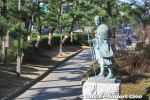
Statue of Matsuo Basho at the southern end of Soka Matsubara pine tree path in Fudaba-kashi Park. Created by Tadahiko Mugikura (麦倉忠彦), a Soka-native sculptor. He also made the Kawai Sora sculpture nearby in 2008.
|
|
|
|

Fudaba-kashi Park on the southern end of Soka-Matsubara also has this rebuilt watchtower.
|
|
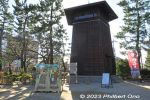
Watchtower on the southern end of Soka-Matsubara. 望楼
|
|

Watchtower is free and open to the public.
|
|

First floor of watchtower has a few exhibits explaining about Soka-Matsubara and Soka-juku post town.
|
|
|
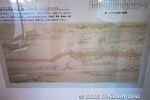
Old map of Soka-juku post town.
|
|
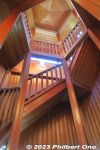
Spiral steps up the wooden watchtower.
|
|
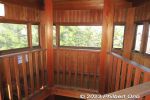
Top floor and lookout atop the watchtower.
|
|
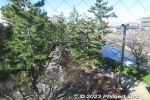
Views from the watchtower.
|
|
|
|

Post towns along the Nikko Kaido Road to Nikko.
|
|

Map of Soka-Matsubara and Soka-juku post town, short walk away.
|
|

About the watchtower and Soka post town.
|
|
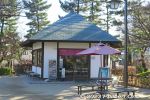
Near the watchtower is Soka-juku Basho-an, a visitor information center.
|
|
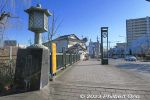
Bridge to Osen Park.
|
|
|
|
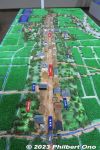
Following Senju-juku (Adachi Ward, Tokyo), Soka-juku was the second post town on the old Nikko Kaido Road from Tokyo (Nihonbashi) to Nikko in Tochigi Prefecture. However, no original buildings from Soka-juku remain. Part of the Nikko Kaido road remains, and a few monuments mark the location of the Honjin VIP lodges and road marker. This is a scale model of Soka-juku displayed in the local history museum.
|
|
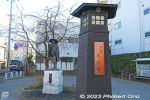
Statue of Kawai Sora (河合曾良), Matsuo Basho's travel companion for his Oku-no-Hosomichi five-month journey on foot to Tohoku and Hokuriku Regions. Statue built in 2008 to mark Soka's 50th anniversary.
|
|
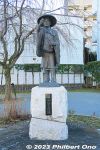
Statue of Kawai Sora, Matsuo Basho's apprentice and travel companion for Oku-no-Hosomichi. This statue is at the intersection leading to the old Nikko Kaido Road. It's across the bridge from the Basho statue at the watchtower.
|
|

Sora Kawai traveled with Haiku poet Matsuo Basho for most of Basho's Oku-no-Hosomichi poetry journey on foot to Tohoku and Hokuriku Regions in 1689.
|
|

Catfish sculpture on a small office building in Soka, Saitama.
|
|
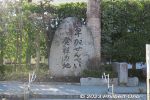
Soka senbei rice cracker birthplace monument in Osen Park, Soka, Saitama. Soka was a rice-growing area and farmers first made rice crackers as a snack. They were later sold to travelers when Soka-juku was established and became a cottage industry. They also used soy sauce from Noda. 草加せんべい発祥の地の碑
|
|
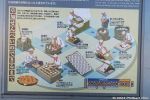
How to make Soka senbei rice crackers. At least 10 steps.
|
|

Shinmei Shrine 神明神社
|
|
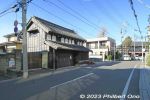
Soka-juku Shinmei-an tourist info center closed on March 21, 2022. The staff moved to the tourist info center near the Basho statue in Fudaba-kashi Park. 草加宿神明庵
|
|

Soka senbei shop on the old Nikko Kido Road.
|
|
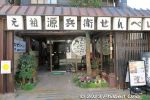
Another Soka senbei shop. There are over 60 senbei shops in Soka.
|
|
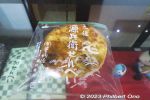
Soka senbei rice cracker. ¥90
|
|
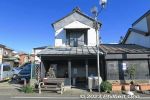
I think this is a bus stop on the Nikko Kaido.
|
|
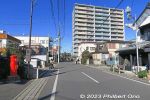
What the old Nikko Kaido looks like today. Nikko Kaido was one of the five main roads from Edo (Tokyo) during the Edo Period (17th to 19h centuries). Nikko was important for having the splendid mausoleum for Tokugawa Ieyasu, the first Tokugawa shogun.
|
|
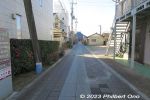
Way to Tofukuji Temple.
|
|
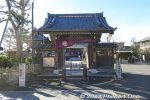
Tofukuji Temple gate.
|
|

Tofukuji Temple was first built in 1606 by Okawa Zusho who once served the Hojo Clan in Odawara, Kanagawa.
|
|
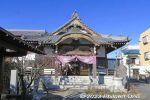
Tofukuji Temple Hondo main hall in Soka, Saitama. The temple is noted for wood carvings on this main hall. (Not to be confused with other temples named "Tofukuji.") 東福寺
|
|
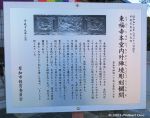
About Tofukuji Temple Hondo main hall wood carvings.
|
|
|
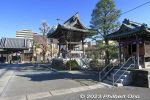
Tofukuji's bell tower.
|
|
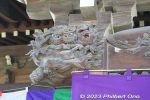
Tofukuji's bell tower is noted for wood carvings.
|
|
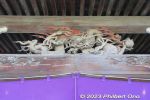
Tofukuji Temple in Soka, Saitama.
|
|
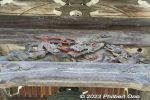
Tofukuji's bell tower dragon wood carvings.
|
|
|
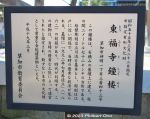
About Tofukuji's bell tower.
|
|

What the old Nikko Kaido Road looks like today.
|
|
|
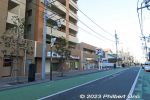
Honjin lodge monument in Soka-juku, Nikko Kaido Road. 大川本陣跡碑
|
|
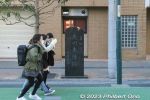
Okawa Honjin lodge monument in Soka-juku, Nikko Kaido Road. There was also another Honjin in Soka-juku. 大川本陣跡碑
|
|
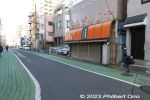
Original road marker in Soka-shuku, Saitama on the Nikko Kaido. 道標元標
|
|
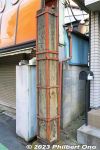
Original road marker reinforced with steel. Rare remnant of Soka-juku on the Nikko Kaido. 道標元標
|
|
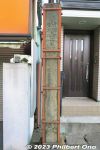
Original road marker in Soka-shuku, Saitama on the Nikko Kaido. 道標元標
|
|

Soka folk history museum is near the old Nikko Kaido. 歴史民俗資料館
|
|

Soka folk history museum used to be Soka Elementary School built in 1926. New school buildings were built to replace this old building which opened in 1983 as a local history museum.
|
|

Soka folk history museum. 草加 歴史民俗資料館
|
|
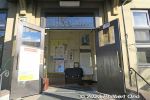
Soka folk history museum entrance. Free admission.
|
|
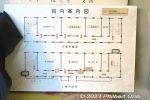
Floor layout on the 1st and 2nd floors. The old classrooms are now exhibition rooms for local history and artifacts.
|
|

Museum hallway looks like a school hallway. When you enter the museum, they want you to sign your name on the reception sheet.
|
|
|

First floor hallway.
|
|
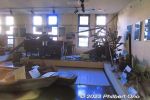
First floor exhibition room displays old farming equipment.
|
|
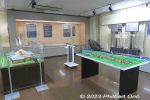
First floor exhibition room.
|
|
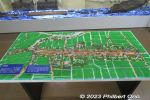
Scale model of Soka-juku post town along the Nikko Kaido. The red tag on the lower left is where the folk history museum is.
|
|
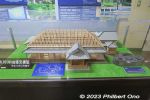
Scale model of the Okawa Honjin lodge in Soka-juku.
|
|
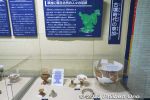
Ancient pottery found in Soka.
|
|

Remains of an ancient dugout canoe excavated from Ayase River in 1929.
|
|
|

About the dugout canoe from 5,300 years ago.
|
|
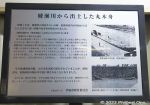
About the ancient dugout canoe excavated from Ayase River in 1929.
|
|
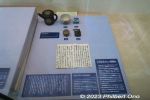
A few implements from the Okawa Honjin lodge.
|
|
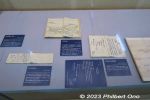
Documents related to traveling on the Nikko Kaido.
|
|

Replica scroll painting of Matsu Basho and Kawai Sora who visited Soka in 1689.
|
|
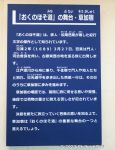
Basho and Kawai Sora visited Soka-juku on March 27, 1689.
|
|
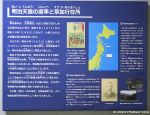
About Emperor Meiji's visit to Soka in 1876 and 1881 when he was traveling to Tohoku or Hokkaido.
|
|
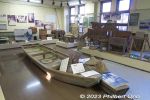
Factory equipment
|
|
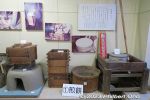
Senbei production equipment for mochi pounding.
|
|

Senbei production equipment.
|
|
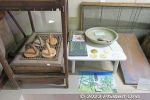
Senbei production equipment for roasting and drying.
|
|
|
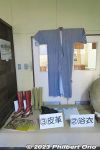
Leather footwear and yukata kimono are also made in Soka.
|
|
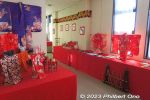
On the 2nd floor, Hinamatsuri Girl's Day dolls.
|
|
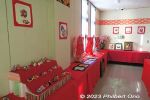
On the 2nd floor, Hinamatsuri Girl's Day dolls.
|
|

On the 2nd floor, Hinamatsuri Girl's Day dolls.
|
|
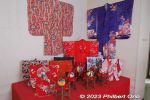
On the 2nd floor, Hinamatsuri Girl's Day dolls.
|
|

2023 is the Year of the Rabbit.
|
|
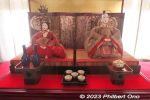
On the 2nd floor, Hinamatsuri Girl's Day dolls.
|
|
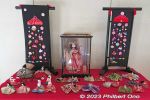
On the 2nd floor, Hinamatsuri Girl's Day dolls.
|
|
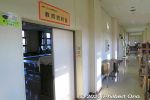
2nd floor hallway.
|
|

Former classroom used as a meeting room.
|
|
|
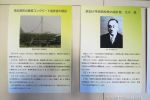
Soka Elementary School was built in 1926. Two-story, ferro-concrete building with six classrooms. Architect was Soka-native Okawa Isamu who even attended Soka Elementary School (right photo)..
|
|

History of the museum/school.
|
|
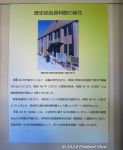
History of the museum/school.
|
|
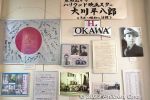
Movie actor from Soka named Okawa Heihachiro (1905–1971) (aka Henry Okawa) who made it to Hollywood. He was in "The Bridge on the River Kwai" movie. 大川 平八郎
|
|
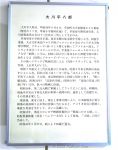
About Heihachiro Okawa.
|
|
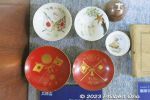
Japanese soldiers returning from the war gave these gifts to their well-wishers. From the 1930s. These are ceremonial sake cups. 兵隊盃
|
|
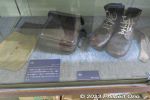
Japanese soldier's bag and boots from 1930s.
|
|
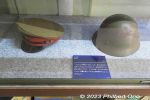
Army helmet
|
|
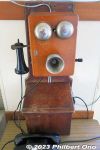
Old telephone from 1931. Soka started telephone service in 1918. Only 60 phone numbers at first. By 1953, 431 people had a telephone number.デルビル磁石式壁掛電話機
|
|
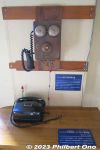
Old telephone.
|
|

Old telephone still widely used in Japan until the 1980s.
|
|
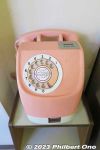
Pink pay phone in Japan. Now obsolete. Took only ¥10 coins.
|
|
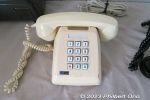
Push button phone widely used in Japan until the early 1990s.
|
|
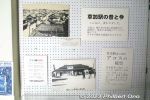
Soka Station history.
|
|
|
|